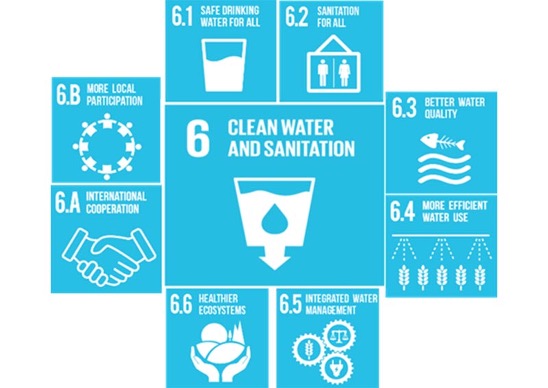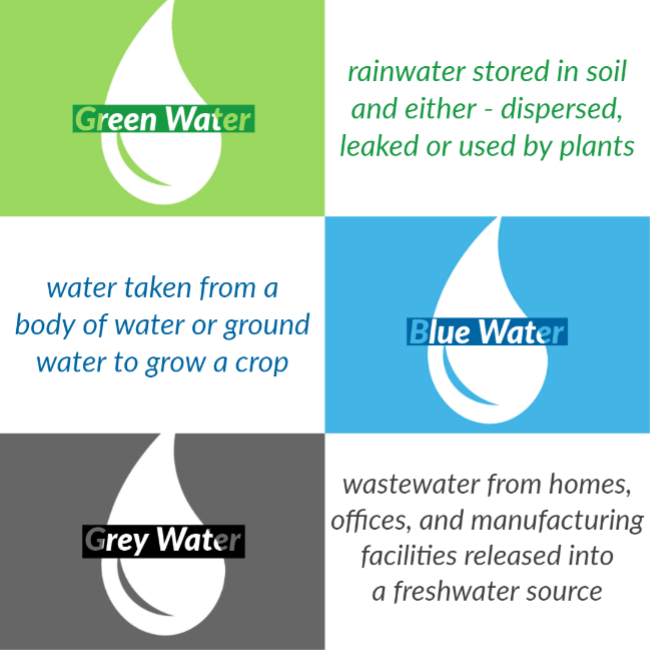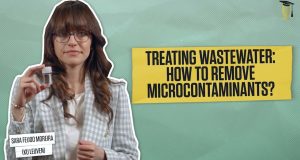In this day and age, billions of people are still unacceptably lacking access to sufficient and safe water resources, including not only water needed for sanitation and hygiene services, but also drinking water. If we take a look at the numbers for 2020, 2 billion people lacked safely managed drinking water, 2.3 billion people suffered from poor basic hygiene and even up to 3.6 billion people lacked safely managed sanitation [1]. Moreover, 1 in 3 people worldwide lacked from soap and water at home, leaving them especially vulnerable to the spread of diseases such as the COVID-19 virus [2].
Even if the United Nations has already shed light over this worldwide concern by recognizing the need to “Ensure availability and sustainable management of water and sanitation for all” as Goal #6 in the 17 Sustainable Development Goals (SDGs), recent reports have revealed that 129 countries are not on track to achieve the objectives set by 2030, which are as follows [1, 2]:
- Achieve universal and equitable access to safe and affordable drinking water for all;
- Achieve access to adequate and equitable sanitation and hygiene for all and end open defecation, paying special attention to the needs of women and girls and those in vulnerable situations;
- Improve water quality by reducing pollution, eliminating dumping and minimizing release of hazardous chemicals and materials, halving the proportion of untreated wastewater and substantially increasing recycling and safe reuse globally;
- Substantially increase water-use efficiency across all sectors and ensure sustainable withdrawals and supply of freshwater to address water scarcity and substantially reduce the number of people suffering from water scarcity;
- Implement integrated water resources management at all levels, including through transboundary cooperation as appropriate;
- Protect and restore water-related ecosystems, including mountains, forests, wetlands, rivers, aquifers and lakes;
- Expand international cooperation and capacity-building support to developing countries in water- and sanitation-related activities and programmes, including water harvesting, desalination, water efficiency, wastewater treatment, recycling and reuse technologies;
- Support and strengthen the participation of local communities in improving water and sanitation management.

Figure 1. Sustainable Development Goal #6: Clean Water and Sanitation [3].
And now that you are reading this… what can you do about it? A good start relies on being aware that improving water use efficiency is a key factor towards reducing water stress. Our water consumption not only entails its direct use within households and activities, but also the indirect consumption related to the production of consumer goods and services. To this end, it is possible to unify both accounting factors under the same indicator, which is the water footprint [4].
The water footprint is an environmental indicator that comprises the total volume of fresh water used for products, processes or services that are consumed by an individual, a community or a business. Together with the carbon footprint, it is one of the most commonly used environmental indicators to quantify the sustainability of products and processes [4]. There are two available calculation methodologies to quantify it: the one defined by the ISO 14046:2014 standard and the one described by the Water Footprint Network (WFN).
The ISO 14046:2014 water footprint is based on the Life Cycle Analysis (LCA) methodology, which involves the assessment of direct and indirect environmental impacts in a cradle-to-grave analysis [5]. Consequently, this quantification not only accounts for the volume of water consumed, but it estimates the environmental load associated to the stages of extraction of raw materials, transport, production, distribution, use and end-of-life of a product or process (Figure 2).

Figure 2. Stages included in the Life Cycle Assessment methodology [6].
- Green water footprint: Water from precipitation that is stored in the root zone of the soil and evaporated, transpired or incorporated by plants. It is typically applied to agricultural, horticultural and forestry products.
- Blue water footprint: Water that has been sourced from surface or groundwater resources and is either evaporated, incorporated into a product or taken from one body of water and returned to another or returned at a different time. It is particularly relevant for irrigated agriculture, industry and domestic activities.
- Gray water footprint: Fresh water required to assimilate pollutants to meet specific water quality standards. It considers point-source pollution discharged to a freshwater resource directly through a pipe or indirectly through runoff or leaching from the soil, impervious surfaces or other diffuse sources.

Figure 3. Sustainable Development Goal #6: Clean Water and Sanitation [8].
References
[1] United Nations, “The Sustainable Development Goals Report 2021,” 2021. [Online]. Available: https://unstats.un.org/sdgs/report/2021/. [2] United Nations, “Goal 6 – Ensure availability and sustainable management of water and sanitation for all,” 2021. [Online]. Available: https://sdgs.un.org/goals/goal6. [3] Institution of Civil Engineers, “Achieving SDG 6 – the ‘Water Goal’ is the prerequisite for agenda 2030 for sustainable development,” 2018. [Online]. Available: https://www.ice.org.uk/eventarchive/achieving-sdg-6-the-water-goal. [4] G. Feijoo, “A xestión da auga nos fogares é unha condición sine qua non da cidade sustentábel do futuro,” Revista Internacional De Comunicación Y Desarrollo (RICD), vol. 4, no. 15, pp. 120-131, 2022. [5] International Organization for Standardization, “ISO 14046:2014. Environmental management – Water footprint – Principles, requirements and guidelines,” 2022. [Online]. Available: https://www.iso.org/standard/43263.html. [6] Ecosystems United, “What is a life cycle assessment? What the different parts of a life cycle assessment?,” 2022. [Online]. Available: https://ecosystemsunited.com/2020/06/22/what-is-a-life-cycle-assessment-what-the-different-parts-of-a-life-cycle-assessment/. [7] Water Footprint Network, “What is a water footprint?,” 2022. [Online]. Available: https://waterfootprint.org/en/water-footprint/what-is-water-footprint/. [8] Cotton today, “The Color of Water in Sustainability – Comes Down to the Root,” 2022. [Online]. Available: https://cottontoday.cottoninc.com/the-color-of-water-in-sustainability-comes-down-to-the-root/. [9] G. Feijoo and M. T. Moreira, “Fostering environmental awareness towards responsible food consumption and reduced food waste in chemical engineering students,” Education for Chemical Engineers, vol. 33, pp. 27-35, 2020. [10] Water Footprint Network, “Personal water footprint,” 2022. [Online]. Available: https://waterfootprint.org/en/water-footprint/personal-water-footprint/#:~:text=For%20example%2C%20the%20water%20footprint,000%20litres%20over%20a%20year.
Sara is an enthusiastic Chemical Engineer with a passion for sustainability, innovation and design. She comes from a small and cosy city in the north-west side of Spain: Santiago de Compostela. Currently, Sara is an Marie Curie Early Stage Researcher (ESR) for the InnovEOX project at KU Leuven and under the supervision of Prof. Dr. Raf Dewil. In particular, she is ESR1 focusing on developing optimized process conditions for the in-situ generation of sulphate radicals and subsequent organic degradation of emerging contaminants in water.
 InnovEOX Innovative Electrochemical OXidation Processes for the Removal and Analysis of micro-pollutants in water streams
InnovEOX Innovative Electrochemical OXidation Processes for the Removal and Analysis of micro-pollutants in water streams



